Abstract
The effect of the sulfhydryl reagents (—SH) p-chloromercuribenzene-sulfonic acid (PCMBS), N-ethylmaleimide (NEM), and inorganic mercury on H14CO3− assimilation in Chara corallina is reported. Commercial grade PCMBS caused severe inhibition of H14CO3− assimilation. Results obtained using purified PCMBS (stock solution passed through a chelating resin) indicated that inhibition observed using unpurified PCMBS was due predominantly to the presence of inorganic mercury (as a contaminant). The inhibitory role of inorganic mercury was verified using HgCl2. This chemical caused a dramatic inhibition of H14CO3− assimilation, while it had little effect on cellular 14CO2 fixation. Reversal of the Hg2+ inhibition of H14CO3− assimilation (in presence of 1.0 millimolar dithioerythritol) was extremely slow, requiring 2 to 3 hours for the reestablishment of control rates. This slow recovery may reflect de novo synthesis of transport proteins.
Almost complete (irreversible) inhibition of H14CO3− assimilation was observed after cells were briefly (2 min) exposed to 0.1 to 0.3 millimolar NEM. At critical concentrations, both inorganic mercury and NEM perturbed the HCO3− transport system to such an extent that the H14CO3− assimilation versus HCO3 concentration profiles changed shape. This could reflect a conversion of the transport system to a facilitated diffusion mode. Alternatively, the efficiency of the transport system may have been affected such that HCO3− efflux increased significantly.
The influence of these —SH reagents on the OH− efflux system was also investigated. The H14CO3− assimilation and OH− efflux results demonstrate the involvement of —SH groups in the plasmalemma transport of both HCO3− and OH− in C. corallina. Greater transport susceptibility to inorganic mercury and NEM compared to purified PCMBS suggested that the sulfhydryl groups were not located on the peripheral surface of the plasmalemma.
Full text
PDF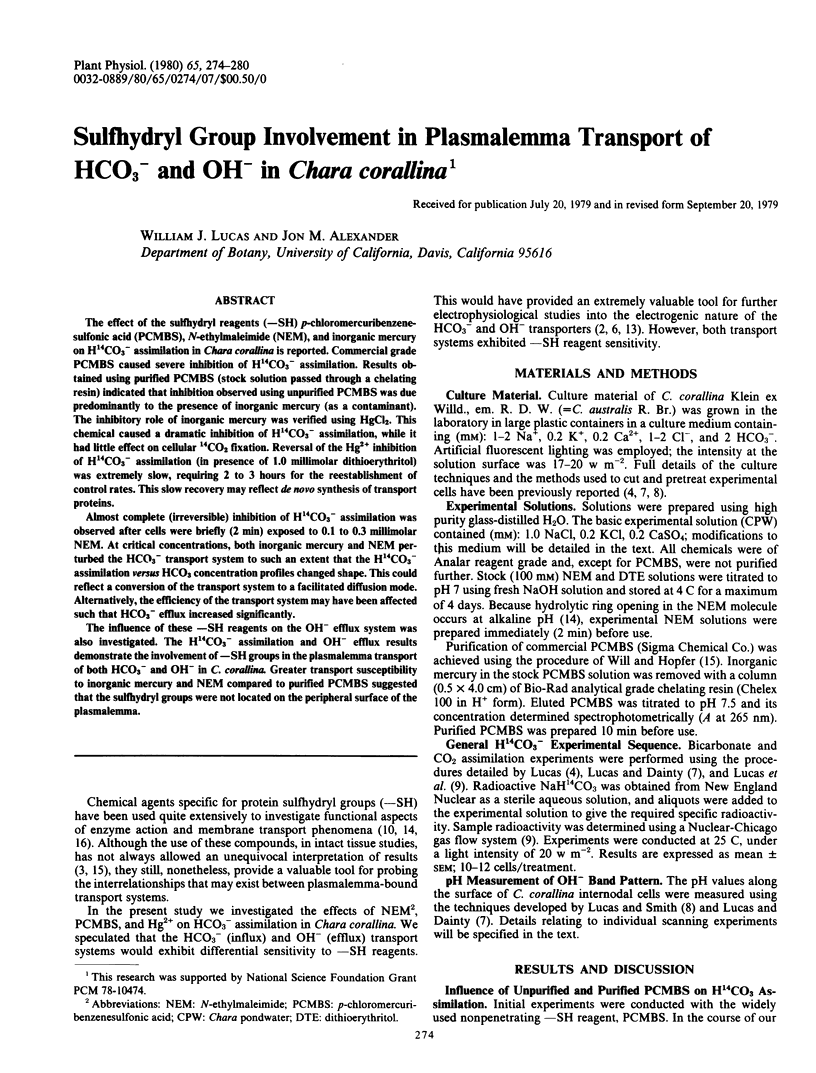
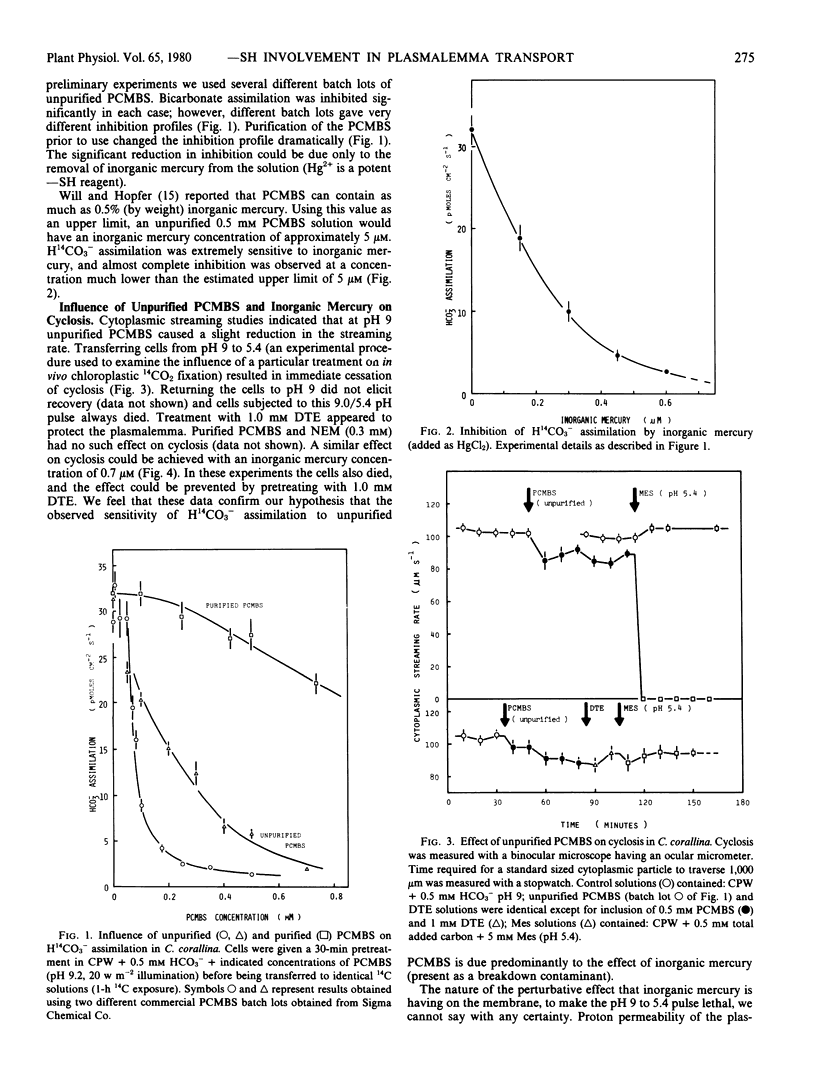
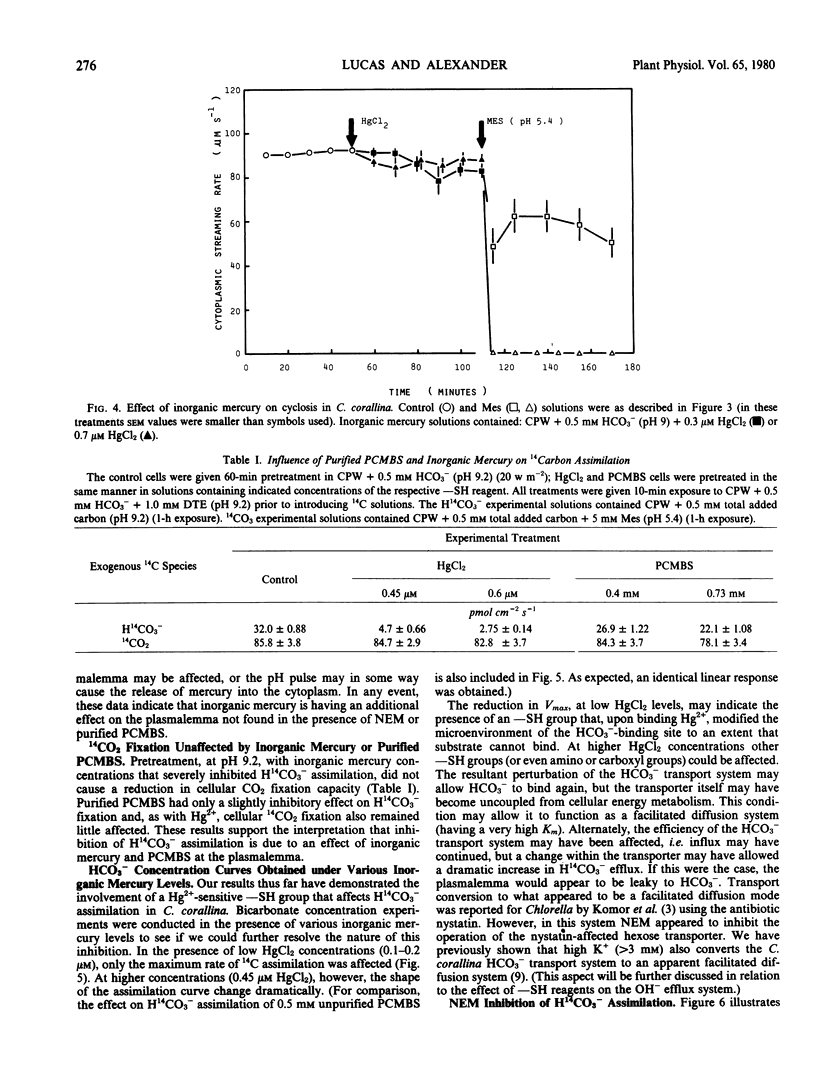
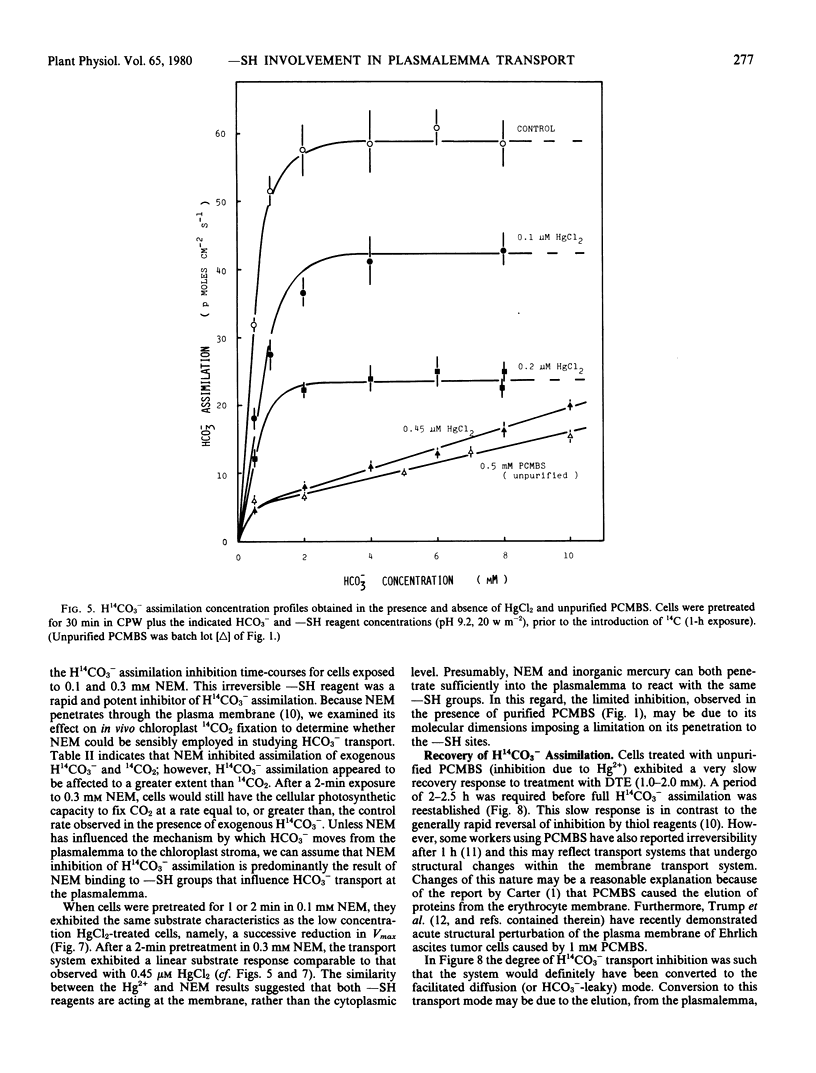
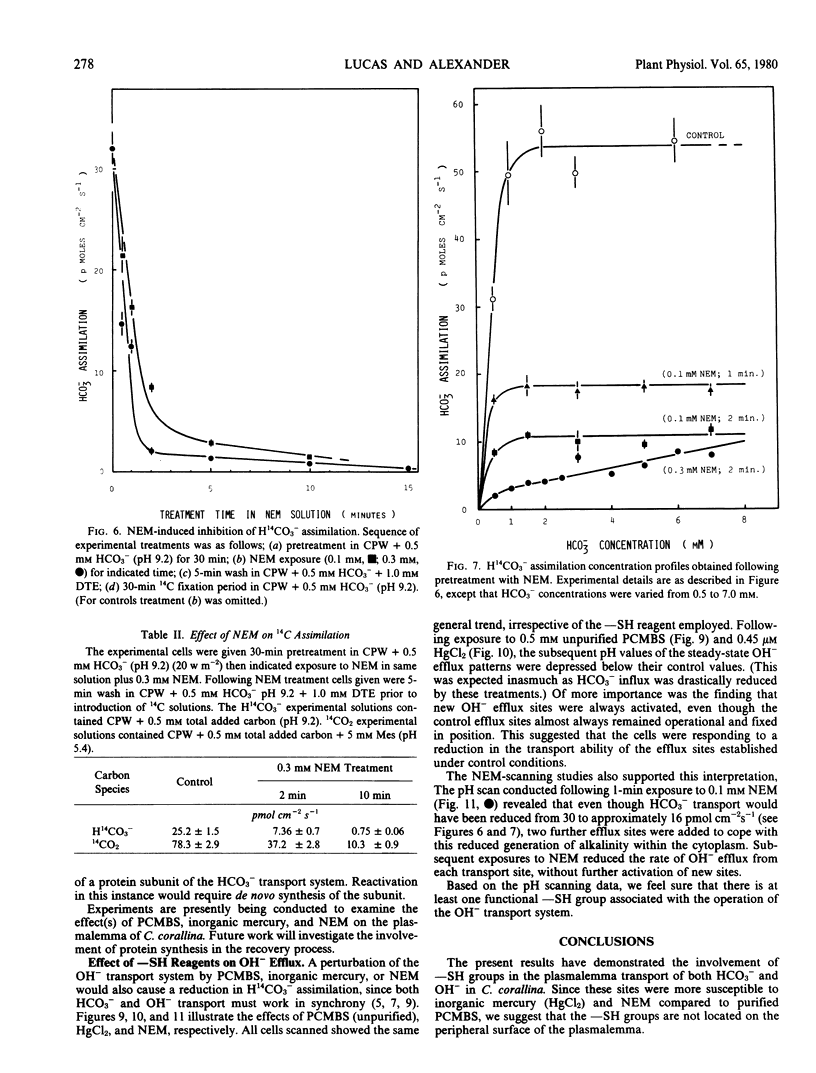
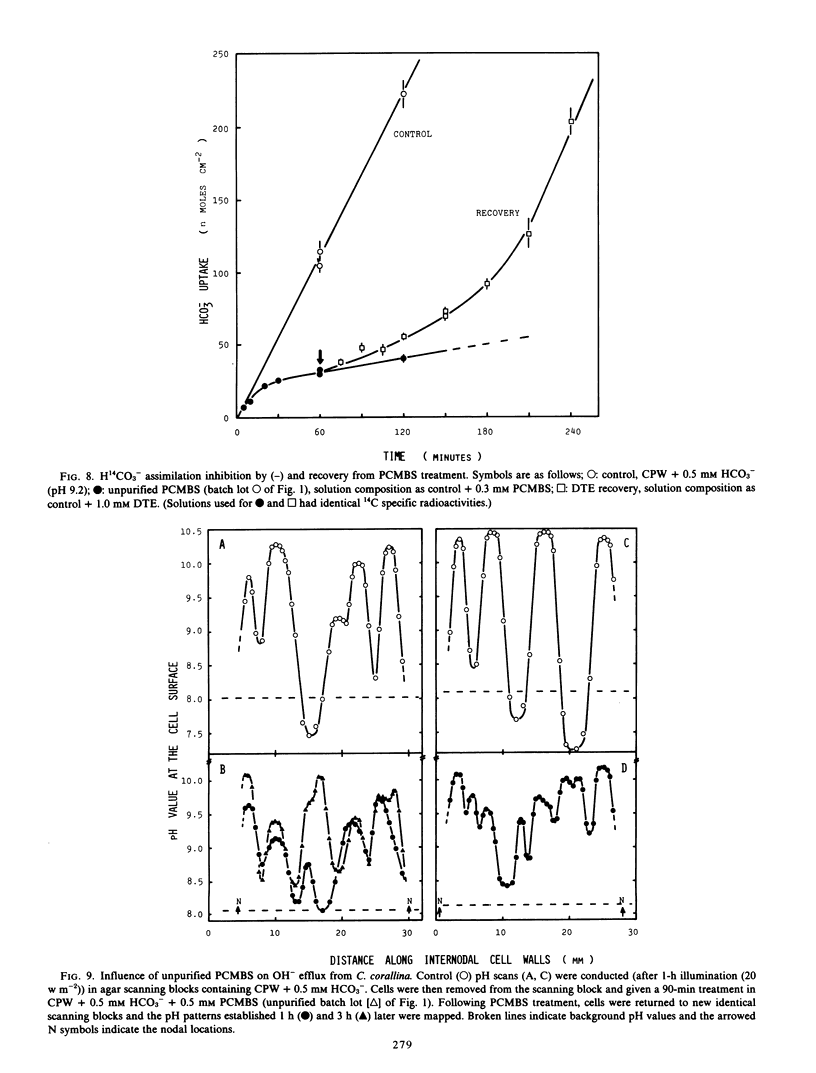
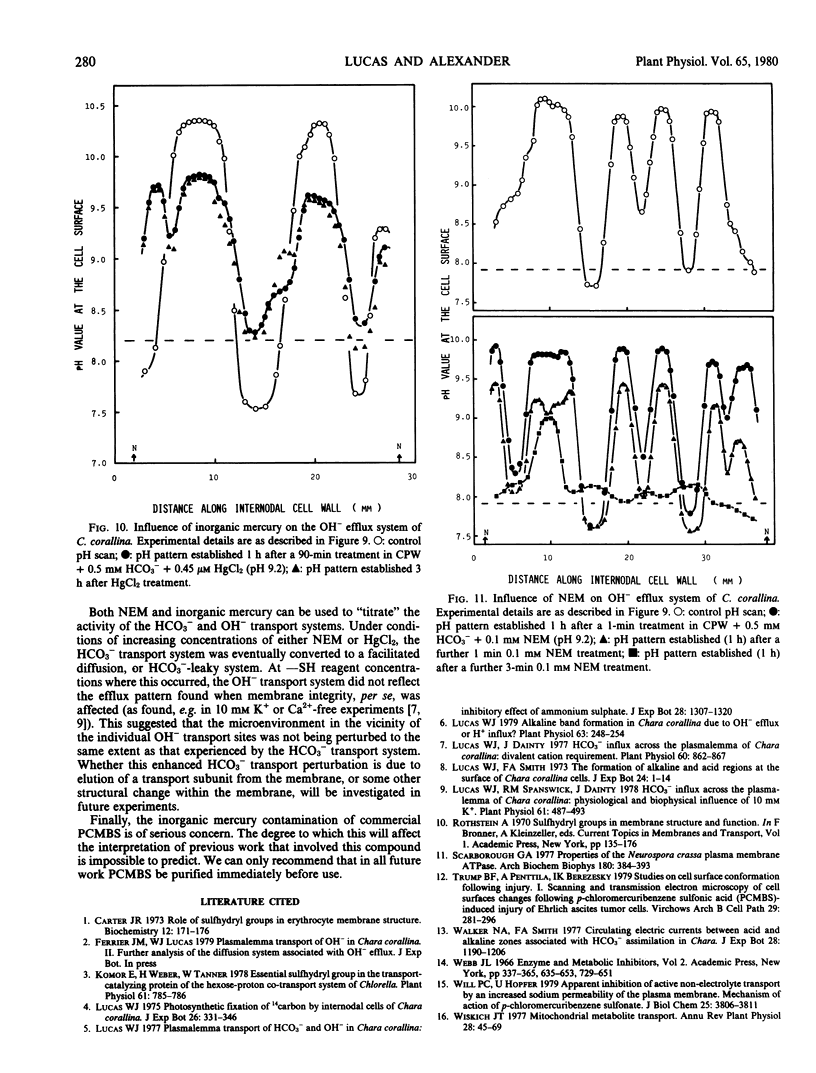
Selected References
These references are in PubMed. This may not be the complete list of references from this article.
- Carter J. R., Jr Role of sulfhydryl groups in erythrocyte membrane structure. Biochemistry. 1973 Jan 2;12(1):171–176. doi: 10.1021/bi00725a028. [DOI] [PubMed] [Google Scholar]
- Komor E., Weber H., Tanner W. Essential Sulfhydryl Group in the Transport-catalyzing Protein of the Hexose-Proton Cotransport System of Chlorella. Plant Physiol. 1978 May;61(5):785–786. doi: 10.1104/pp.61.5.785. [DOI] [PMC free article] [PubMed] [Google Scholar]
- Lucas W. J. Alkaline Band Formation in Chara corallina: Due to OH Efflux or H Influx? Plant Physiol. 1979 Feb;63(2):248–254. doi: 10.1104/pp.63.2.248. [DOI] [PMC free article] [PubMed] [Google Scholar]
- Lucas W. J., Dainty J. HCO(3) Influx Across the Plasmalemma of Chara corallina: Divalent Cation Requirement. Plant Physiol. 1977 Dec;60(6):862–867. doi: 10.1104/pp.60.6.862. [DOI] [PMC free article] [PubMed] [Google Scholar]
- Lucas W. J. HCO(3) Influx across the Plasmalemma of Chara corallina: Physiological and Biophysical Influence of 10 mm K. Plant Physiol. 1978 Apr;61(4):487–493. doi: 10.1104/pp.61.4.487. [DOI] [PMC free article] [PubMed] [Google Scholar]
- Scarborough G. A. Properties of Neurospora crassa plasma membrane ATPase. Arch Biochem Biophys. 1977 Apr 30;180(2):384–393. doi: 10.1016/0003-9861(77)90052-2. [DOI] [PubMed] [Google Scholar]
- Trump B. F., Penttila A., Berezesky I. K. Studies on cell surface conformation following injury. I. Scanning and transmission electron microscopy of cell surface changes following p-chloromercuribenzene sulfonic acid (pcmbs)-induced injury of Ehrlich ascites tumor cells. Virchows Arch B Cell Pathol. 1979 Feb 6;29(4):281–296. [PubMed] [Google Scholar]
- Will P. C., Hopfer U. Apparent inhibition of active non-electrolyte transport by an increased sodium permeability of the plasma membrane. Mechanism of action of p-chloromercuribenzene sulfonate. J Biol Chem. 1979 May 25;254(10):3806–3811. [PubMed] [Google Scholar]


